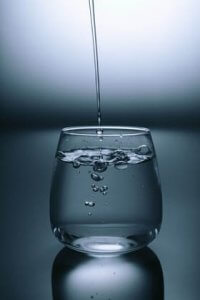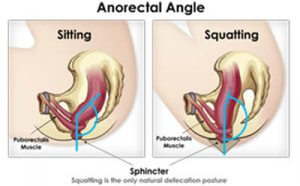Pain. Strain. Blood. Bad Smell.
In any other part of the body, avoiding these goes without saying, and if they do occur we generally take steps to address them. But in the bathroom, these are so commonplace that they seem almost ‘the norm’, or ‘normal for me’. In my previous blog I described these common conditions and what forms they take in toilets around the country. I also described how, and why, these are at best sub-optimal health, and extremely commonly can be the precursor or accompaniment to more complex and chronic conditions.
Poos are tricky to talk about, I get it. Maybe you’re reading this blog on the toilet right now, completely clammed up with embarrassment, yet knowing that yes, I’m talking to you. And I want to help.
There IS a solution. I have helped people of all ages overcome chronic pain, debilitating toilet habits and incredibly frustrating situations in relation to their bowels. The body is an amazing organism and if we give it the right support, I have seen it time and again swing back into natural rhythms and smoother function.
Even in very complex medical scenarios, the suggestions below have helped patients improve to some degree. This is because they tap into the other hard-wired system of the body, the opposite to Fight-or-Flight: Rest and Digest. By promoting this system, it hugely benefits overall wellbeing, and starts to get the cogs of digestion and elimination working naturally again – with no pain, no strain, no blood, and no smell…
Here are my three very best, tried and tested ways of alleviating all of the above:
Re-Hydrate
 How simple, right? Yet in a room of over 100 people at a recent event I attended, just ten of us raised our hands when asked if we drink 2 litres of water a day. My brain doesn’t work if I don’t have a pint of water in the morning! The human body is around 60% water, with some areas needing more hydration than others – the brain is around 73%. And this only comes from our fluid intake – we can survive days without food but start to feel debilitating symptoms after just a few hours of thirst. Headaches? Brain fog? Dry flaky skin? Constipation? Muscle and joint stiffness? Hormonal imbalance? Drinking more water is the smallest, simplest, but most far reaching change we can make to our health today.
How simple, right? Yet in a room of over 100 people at a recent event I attended, just ten of us raised our hands when asked if we drink 2 litres of water a day. My brain doesn’t work if I don’t have a pint of water in the morning! The human body is around 60% water, with some areas needing more hydration than others – the brain is around 73%. And this only comes from our fluid intake – we can survive days without food but start to feel debilitating symptoms after just a few hours of thirst. Headaches? Brain fog? Dry flaky skin? Constipation? Muscle and joint stiffness? Hormonal imbalance? Drinking more water is the smallest, simplest, but most far reaching change we can make to our health today.
This is SO important for so many bodily functions, but it can make an almost immediate impact on your stool consistency and bowel comfort. In the lower intestinal tract water is re-absorbed into the stools with the exact purpose of softening them so they are comfortable to pass. If the body is dehydrated, then it will retain water, and your stools will be harder, harder to pass, and the consequences harder to ignore. Keeping it super-simple, whatever else you drink in the day, I recommend simply drinking a pint of plain water first thing in the morning to top up your intake. Simple as that. It may make a small positive difference, but it may make a huge one too.
Relax… and Re-Position
I’ve mentioned in my previous blog the natural relaxation of the pelvic floor muscles to allow passage of stools, and their failure to do so. It’s not necessary to let it get so bad that you need a formal diagnosis, there are ways to relax your pelvic floor on the loo quickly and easily.
The best, simplest and most comfortable way is to have a small stool in your bathroom, roughly 15 cm high to pop your feet on while sitting there. I use a wicker basket, employed the rest of the time to conceal all my lotions and potions. This will raise your knees to slightly higher than your hips.
 This is the optimum position for the pelvic floor to relax – the inner pelvic muscles relax best in this position. It reduces the natural bend in your colon, literally allowing for a straighter passage out.
This is the optimum position for the pelvic floor to relax – the inner pelvic muscles relax best in this position. It reduces the natural bend in your colon, literally allowing for a straighter passage out.
Indeed being up on your toes can actually activate the pelvic floor and stop it relaxing, so if you’re below average height this is going to be a big win for you. This slight squatting position triggers signals in the brain, again stimulating the ‘rest and digest’ system.. Don’t worry too much about the exact angle – some recommend 35 degrees at the hip, but I often find this is too extreme, especially for those with hip problems. Simply remember – knees slightly higher than hips, not around your armpits. Get in this position, rest your elbows on your knees and…
Breathe…
This is the crucial final step. The way we breathe is hard-wired in a two-way direction into our brain and our levels of stress or arousal. We both take input from outside (see a lion running at us – heart rate and breathing increases dramatically) and from inside – we can consciously breathe slowly, and this will calm the state of our whole body. Think paper bags in a panic attack. Or any mindfulness technique ever. Honestly, just do 5 slow long breaths, in and out through your nose, anytime, anywhere. You WILL feel calmer! And so will the muscles of your pelvis, which need to relax to let a poo out.
It’s important to overcome the hurdle of interruption too. This will understandably create a bit of stress or irritation, both non-conducive to relaxed completion of the digestive cycle. So make it a priority to fix that door handle, and get a lock on the bathroom door. If a screaming (but safely contained) baby is what’s holding you back, perhaps treat yourself to some noise cancelling headphones, with your favourite relaxing music on standby.
Honestly. Without rushing or straining, going for a poo should take no more than 2-3 minutes of quiet contemplation. You DO have time. Your bowels, and your overall health, will thank you immeasurably.
Here’s a video I made to bring these last two together. It has brought huge benefits to so many of my clients, and is so easy to bring into your life! Take a look and get accessorising in your bathroom.